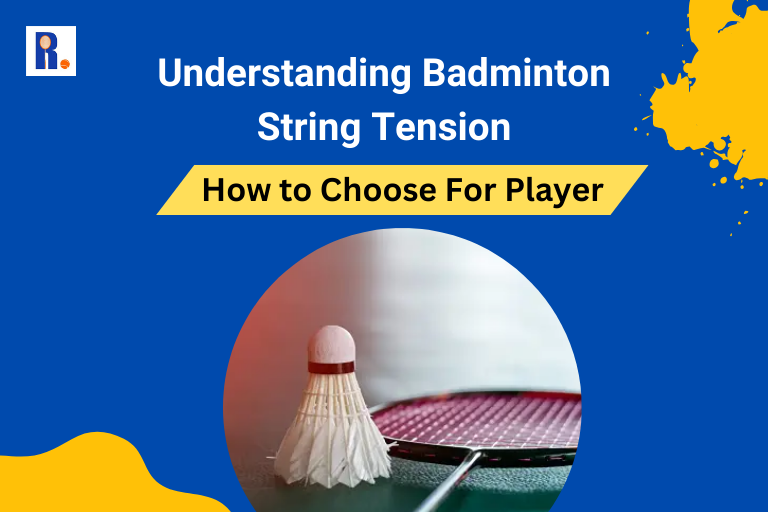Understand the Strings in Badminton for Optimal Performance

Badminton is a sport that demands a fine blend of skill, speed, and strategy. While players often focus on improving their technique and physical fitness, the equipment used can significantly impact performance. One crucial aspect of a badminton racket is the string tension. Understanding and choosing the right string tension can make a significant difference in your game, whether you’re a beginner or an advanced player.
What is Badminton String Tension?
String tension refers to how tightly the strings of a badminton racket are strung. It is usually measured in pounds (lbs) or kilograms (kg). The tension can range from around 18 lbs to 35 lbs or more, with different tensions providing varying levels of power and control.
Low String Tension (18-22 lbs)
Lower string tension creates a larger “sweet spot” on the racket, which is the area where the shuttlecock is most effectively hit. This can be particularly beneficial for beginners and intermediate players for several reasons:
- Increased Power: Lower tension allows the strings to flex more upon impact, acting like a trampoline and propelling the shuttlecock with greater force.
- Forgiveness on Miss-hits: The larger sweet spot makes it easier to hit the shuttlecock effectively, even if your timing or technique isn’t perfect.
- Reduced Risk of Injury: With more give in the strings, there’s less strain on the arm and shoulder, which can help prevent injuries, especially for players who are still developing their strength and technique.
High String Tension (24-30+ lbs)
Higher string tension, on the other hand, tightens the strings, reducing the sweet spot but offering more precision and control:
- Increased Control: Tighter strings mean less movement upon impact, allowing for more precise shots. This is crucial for advanced players who need to execute delicate net shots and precise smashes.
- Enhanced Feel: High tension strings provide better feedback, allowing players to feel the shuttlecock more clearly and make quick adjustments.
- Suitability for Fast Play: In high-speed games, tighter strings help players respond faster and maintain control during rapid exchanges.
Choosing the Right Tension for Your Play Style
Selecting the right string tension depends largely on your playing style and skill level. Here are some guidelines to help you make an informed decision:
- Beginners and Recreational Players: A tension between 18-22 lbs is typically ideal. This range provides a good balance of power and forgiveness, helping new players to enjoy the game and develop their skills without unnecessary frustration or injury.
- Intermediate Players: As your skills improve, you might benefit from slightly higher tension, around 22-24 lbs. This range offers more control while still providing ample power, helping you to refine your technique and shot precision.
- Advanced Players: For experienced players who have mastered the fundamentals and possess good technique, tensions of 24 lbs and above are often preferred. This higher tension enhances control and shot accuracy, which is critical in competitive play.
The Impact of String Material and Gauge
While tension is crucial, the type of string and its gauge (thickness) also play significant roles in performance. There are various string materials available, including synthetic gut, multifilament, and natural gut, each offering different feel and durability.
- Thin Strings (0.65-0.69 mm): Thinner strings generally provide more power and better feel but may sacrifice durability. They are suitable for players who prioritize performance over longevity.
- Thick Strings (0.70-0.75 mm): Thicker strings tend to be more durable and provide consistent performance over time, making them ideal for players who prefer reliability and are less concerned with maximizing power and touch.
Regular Maintenance and Restringing
Maintaining the optimal string tension is essential for consistent performance. Over time, strings lose tension due to regular play and environmental factors such as humidity and temperature changes. Advanced players often rest their rackets every few weeks or after every major tournament, while recreational players might do so every few months.
Understanding badminton string tension and its impact on your game is essential for maximizing your performance on the court. By choosing the appropriate tension for your skill level and play style, you can enhance both your power and control, making your time on the court more enjoyable and effective. Regular maintenance and attention to string type and gauge further ensure that your racket performs at its best, allowing you to focus on improving your game and achieving your badminton goals.